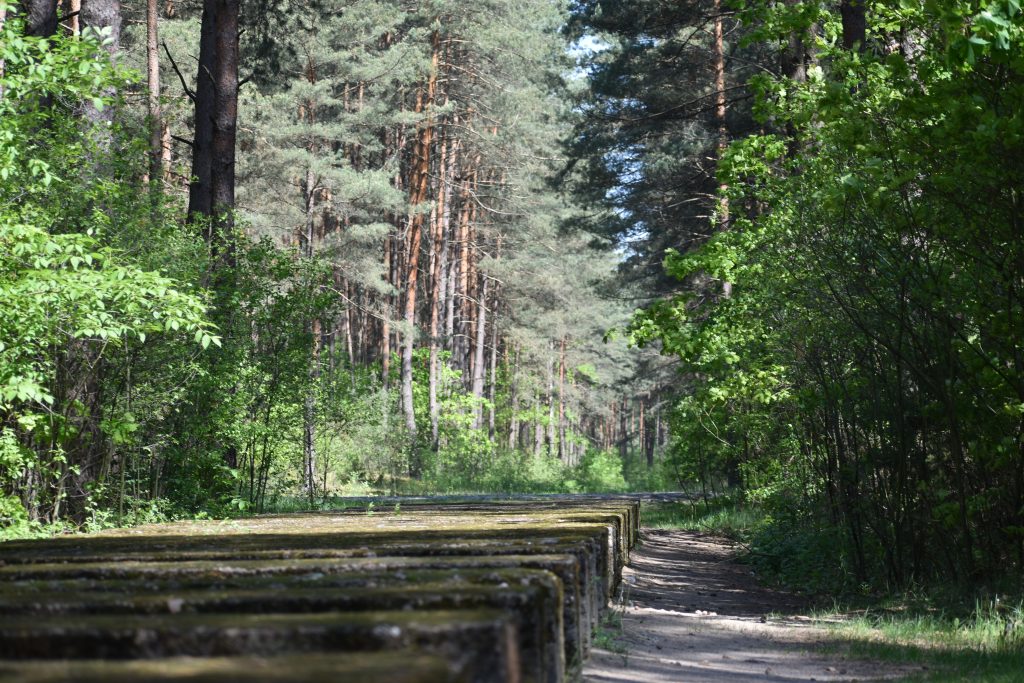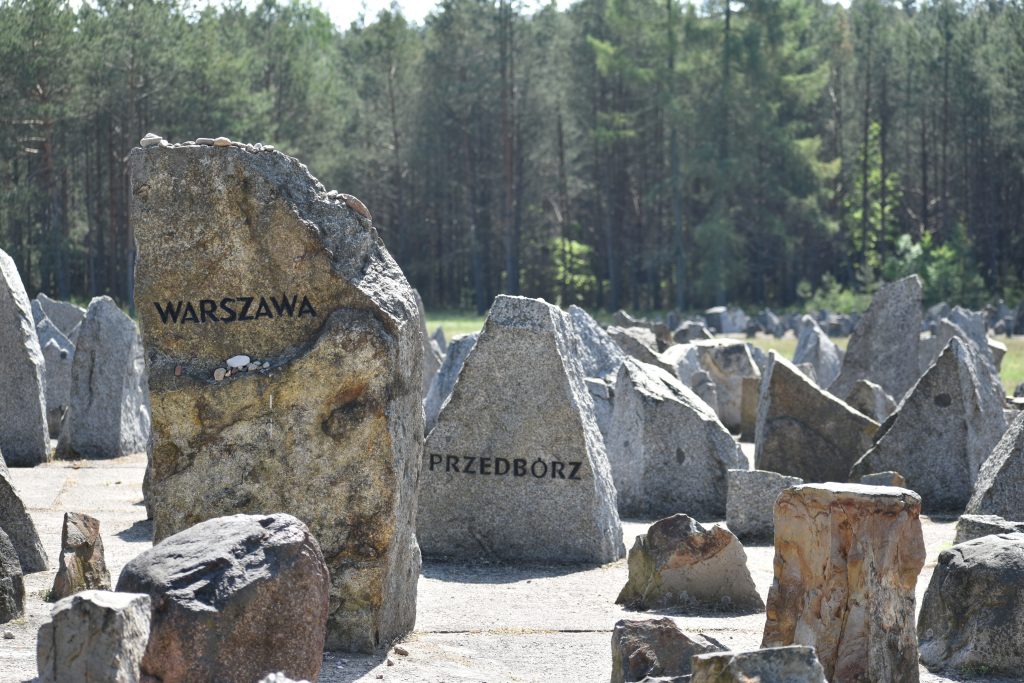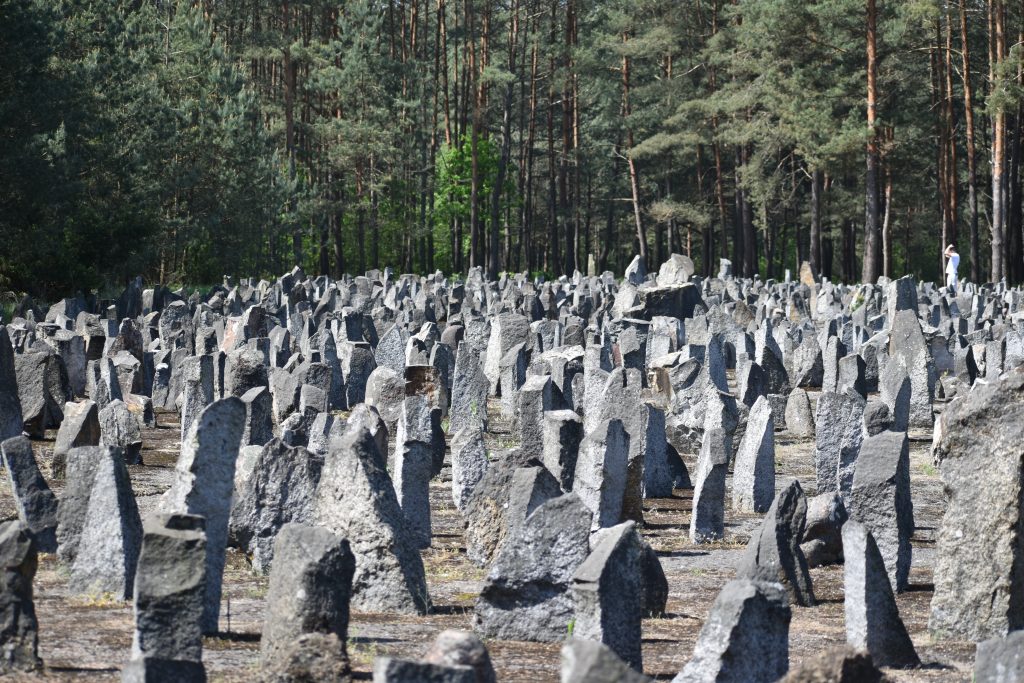Birds are singing. The sky is blue. The grass is green. The trees are rustling in the wind. The sun is warm. A recipe for a beautiful day. But this place can’t be beautiful. A place of death and suffering, where so many people lost their lives in such a violent manner is incapable of being beautiful. This is an important thing to remember at places of Holocaust memory.
Treblinka, an extermination camp located just 100km (60 miles) away from the city of Warsaw, was an incredibly vile and brutal place. Through its operation from July 1942 to October 1943, it claimed the lives of 700,000- 900,000 people, mostly Jews from the Warsaw Ghetto. The commemoration of the site today is not captured in museum exhibits and guided experiences like the ones that can be found at Auschwitz-Birkenau. Today, visiting Treblinka requires one to see the invisible more than any other site I have encountered. There are no markers of where things once stood. Instead, there are hundreds of stones placed to remember the different cities and countries from which the victims originated.
At the end of the war, the Nazis had been working to destroy all traces of their crimes, and Treblinka was no exception. The camp was completely destroyed, and today the site itself is left alone. The memorials that have been established are left to the will and whims of nature, with only the grass being trimmed in certain areas. The openness of the site and the absence of what once was allows visitors to process the history of what happened there at their own mental and emotional levels. There is nothing to direct your path, nothing to tell you how to feel. Yet the site of Treblinka, a site responsible for almost the same number of deaths as Auschwitz, receives only a fraction of the tourism and attention as the State Museum of Auschwitz-Birkenau. Perhaps it is because the Nazis chose a place far off the beaten path that the site still today is still not in the realm of public visibility. There are other arguments that suggest the global community is less concerned with extermination sites that murdered predominantly Eastern Europeans rather than Western Europeans. Regardless of the reason, Treblinka is far less known than Birkenau, and this disconnect in memory can be detrimental to the history of the Holocaust.




2 comments
Your thoughts and feelings about these places were acutely conveyed. Well done!
Alex, your post captures so eloquently the varieties of memory we experience on this study abroad trip. Each site we’ve visited, whether a camp marked by giant tourism or a simple commemorative memorial, a former ghetto (like we saw in Warsaw) that’s hard to fathom because it was so destroyed before the end of the war, or even museum exhibits like the one at POLIN that reminds us Jewish university students had to sit on “ghetto benches” early in the dehumanization process, the multiplicities of memory is various forms convey to us, the visitors to this past, the terrible ramifications of antisemitism in all its guises.